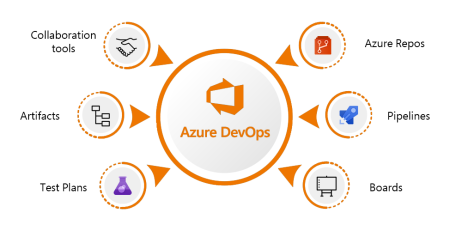Offshore Development Team: Your Complete Guide to Success in 2024
Table of Contents
Creating a dependable and effective offshore development team is crucial in the ever changing business and technological world. In order to remain competitive as we approach 2024, organizations are looking for creative ideas and worldwide talent. The goal of this in-depth manual is to provide you the critical knowledge, practical advice, and techniques you need to create and lead an effective offshore development team.
Understanding the Basics of Offshore Development Teams
To embark on a successful journey of forming an offshore development team, it’s essential to grasp the fundamentals that underpin the concept. In this section, we’ll delve into the definition, benefits, and key considerations surrounding offshore development teams.
Definition and Benefits
In the realm of software development, the term “offshore development team” encompasses a dynamic and collaborative approach to leveraging global talent for the creation and maintenance of software solutions. Let’s delve into the definition and scope of offshore development teams to gain a comprehensive understanding.
Definition
A collection of highly qualified individuals situated in a separate geographic region from the customer or parent organization is referred to as an offshore development team. Working remotely, this team contributes to many stages of the software development life cycle, from testing and quality assurance to continuous maintenance and original design and coding.
One distinguishing feature is the geographic distance, which enables companies to access a wide range of resources and talent that might not be easily accessible in their local area. This tactic is based on the notion that the greatest knowledge should be sought for regardless of geographic location.
Scope
The scope of offshore development teams is extensive, covering a multitude of services and expertise areas. Some key aspects of the scope include:
- Web and Mobile App Development: Offshore teams are often engaged in the creation of web and mobile applications, contributing to the design, development, and optimization of user interfaces and experiences.
- Software Maintenance and Support: Beyond initial development, offshore teams play a crucial role in maintaining and supporting existing software systems. This includes bug fixes, updates, and ensuring the continued functionality of applications.
- Quality Assurance and Testing: Offshore teams contribute to the quality assurance process by conducting rigorous testing to identify and rectify software defects. This ensures that the final product meets the highest standards of performance and reliability.
- Project Management and Coordination: Offshore development teams may include project managers and coordinators who facilitate communication between onshore and offshore teams. They ensure that projects stay on track, meet deadlines, and adhere to client specifications.
- Emerging Technologies Integration: Offshore teams often stay abreast of the latest technological trends and can contribute to the integration of emerging technologies such as artificial intelligence, blockchain, and machine learning into software solutions.
- Cost-Effective Solutions: The scope extends to providing cost-effective solutions for businesses by leveraging the economic advantages of operating in regions with lower labor costs.
Understanding the scope of offshore development teams involves recognizing their adaptability to various tasks within the software development landscape. From startups seeking cost-effective solutions to established enterprises looking to scale their projects, offshore development teams offer a versatile and strategic approach to achieving software development goals.
Key Considerations for Success
Successfully navigating the terrain of offshore development teams requires a strategic approach and careful consideration of various factors. Here are key considerations that can contribute to the success of your offshore development endeavors in 2024 and beyond:
1. Define Clear Project Goals
Clearly defining the project goals is essential before starting the offshore development process. Clearly state the goals, checkpoints, and anticipated results of your project. For both onshore and offshore teams, this clarity offers a road map, bringing everyone together with a shared goal.
2. Understand Cultural Differences
It is important to culturally aware of what transpires in an offshore development team. They should acknowledge and learn to regard the design changes that might come about differences between your onshore and offshore teams. Know and appreciate different beliefs, attitudes, opinions, and perspectives because this ability can help to promote cooperation and communication.
3. Establish Effective Communication Channels
Effective communication is the cornerstone of successful offshore development. Invest in robust communication channels that facilitate seamless interaction between teams. Utilize video conferencing, project management tools, and regular meetings to ensure a transparent flow of information despite geographical distances.
4. Ensure Legal and Compliance Adherence
Familiarize yourself with the legal and compliance requirements of the offshore location. Ensure that your offshore development activities comply with data protection regulations, intellectual property laws, and industry standards. This proactive approach mitigates legal risks and ensures a smooth collaboration process.
5. Proactive Risk Management
Determine any possible dangers related to offshore development and create thorough plans for reducing such risks. Language obstacles, time zone variations, geopolitical unpredictability, and unforeseen technological difficulties are a few examples of these hazards. Proactive risk management equips your team to effectively navigate obstacles.
6. Invest in Team Building
Even in situations when employees are physically apart, team building is crucial to creating a supportive and cooperative work atmosphere. Plan online team-building exercises, promote intercultural dialogue, and foster a spirit of unity. Having a strong team dynamic increases productivity and motivation.
7. Leverage Technology for Collaboration
A key factor in bridging the geographic divide is technology. To improve cooperation and expedite processes, spend money on project management software, communication applications, and collaboration tools. Make sure the teams in your organization have access to the newest and best technology solutions.
8. Continuous Learning and Improvement
Embrace a culture of continuous learning and improvement. Encourage feedback from both onshore and offshore teams to identify areas for enhancement. Regularly assess and refine your processes, communication strategies, and project management methodologies to adapt to changing dynamics.
9. Foster a Collaborative Culture
Cultivate a collaborative culture that transcends borders. Encourage open communication, knowledge sharing, and a sense of shared ownership for project success. This collaborative mindset fosters innovation and creativity within the offshore development team.
10. Regular Performance Evaluation
To evaluate the efficacy of your offshore development team, put in place a systematic mechanism for performance reviews. Take a regular look at team dynamics, project milestones, and key performance metrics. This continuous assessment guarantees that your offshore crew is in line with your corporate goals.
You build a strong foundation for success by integrating these important factors into your offshore development approach. These factors will serve as a foundation for developing and leading an effective offshore development team as we go into further detail about the hiring procedure, onboarding tactics, and project management approaches in the next sections of this guide.
Navigating the Hiring Process in 2024
In the dynamic landscape of 2024, navigating the hiring process for an offshore development team requires a strategic and informed approach. This section will explore the current trends, challenges, and strategic recruitment strategies to ensure you build a talented and cohesive offshore team.
Current Trends and Challenges
As we approach 2024, dynamic trends and distinct difficulties will continue to define the offshore development teams’ environment. Businesses looking to capitalize on the benefits of offshore talent must comprehend the state of affairs. Let’s examine the current offshore development trends and issues in 2024.
Current Trends
1. Remote Work Revolution
The concept of remote work has evolved into a revolution, with more professionals seeking flexible work arrangements. Offshore development teams are capitalizing on this trend, allowing businesses to tap into a broader talent pool without being restricted by geographical boundaries.
2. Rise of Hybrid Models
Hybrid models, combining onshore and offshore resources, are gaining prominence. Businesses are adopting a flexible approach, strategically blending local and remote talent to optimize cost-efficiency and project delivery.
3. Focus on Collaboration Tools
Advanced collaboration tools have become integral to offshore development. With an emphasis on real-time communication and project management, businesses are investing in tools that facilitate seamless collaboration across different time zones and geographies.
4. AI and Automation Integration
The integration of artificial intelligence (AI) and automation technologies is a growing trend in offshore development. These technologies enhance efficiency, streamline workflows, and contribute to the overall effectiveness of development processes.
5. Emphasis on Cybersecurity
With the increasing prevalence of remote work, cybersecurity has become a top priority. Offshore development teams are adopting robust security measures to protect sensitive data and ensure compliance with global cybersecurity standards.
Current Challenges
1. Talent Shortages and Competition
The demand for skilled offshore talent is outpacing the available supply. Businesses face the challenge of navigating talent shortages and intense competition for top professionals, particularly in specialized fields such as AI, blockchain, and cybersecurity.
2. Cultural Differences and Communication Barriers
Navigating cultural differences and overcoming communication barriers pose ongoing challenges. Effective communication is crucial for project success, and businesses must proactively address cultural nuances to foster a collaborative and inclusive working environment.
3. Data Privacy and Compliance Concerns
As data privacy regulations evolve globally, businesses engaging offshore development teams must navigate complex compliance landscapes. Ensuring adherence to data protection laws and industry regulations is a critical challenge.
4. Managing Remote Team Productivity
While remote work offers flexibility, managing and ensuring the productivity of a dispersed team can be challenging. Businesses need effective strategies to monitor and enhance the performance of offshore teams and maintain a cohesive work culture.
5. Technological Evolution and Skill Gaps
The rapid evolution of technology creates skill gaps within offshore teams. Staying updated with emerging technologies and addressing skill shortages through training and upskilling programs is an ongoing challenge for businesses.
Navigating Trends and Challenges in 2024
In order to prosper in the offshore development team environment of 2024, companies need to take advantage of emerging trends and anticipate problems before they arise. Achieving success in offshore development initiatives requires using creative recruitment tactics, allocating funds for collaborative tools, and placing a high priority on continuous talent development. We will go into more detail on hiring, onboarding, and management techniques in the upcoming sections of this guide to make sure your offshore development project is a success.
Strategic Recruitment Strategies
Crafting a successful offshore development team begins with strategic recruitment strategies that go beyond traditional hiring approaches. In the dynamic landscape of 2024, businesses need innovative and proactive methods to identify, attract, and secure top talent for their offshore teams. Here are strategic recruitment strategies to ensure success:
1. Comprehensive Talent Sourcing
Make use of a multifaceted strategy while hiring people. Use specialist job boards, do focused searches on professional networking sites, and deal with recruiting firms that have experience hiring people from overseas. To find applicants with a range of experiences and skill sets, cast a wide net.
2. Virtual Interviews and Assessments
Given the prevalence of remote work, virtual interviews and assessments have become standard practices. Use video conferencing tools to conduct interviews and assess candidates’ technical skills. Simulate real-world scenarios to gauge problem-solving abilities and cultural fit within the team.
3. Build a Strong Employer Brand
Attracting great talent requires building a strong employer brand. Emphasize the culture, values, and dedication to professional growth of your organization. Present success stories from your offshore teams to gain traction and draw applicants that share the values of your company.
4. Collaborative Decision-Making
Involve key stakeholders from both onshore and offshore teams in the decision-making process. Foster collaboration between hiring managers, project leads, and team members to ensure diverse perspectives contribute to the selection of the most suitable candidates. This collaborative approach enhances the overall success of the team.
5. Embrace Technological Solutions
Utilize technology to improve and expedite the hiring process. Put application tracking systems (ATS) into place to effectively manage candidate pipelines. To evaluate technical abilities objectively, use online skill evaluation tools. Within the hiring team, collaborative platforms can help with decision-making and communication.
6. Assess Cultural Fit
An essential component of productive offshore team dynamics is cultural fit. Consider a candidate’s fit with the culture and values of your organization in addition to their technical abilities. This guarantees good communication and collaboration between the offshore crew and their onshore colleagues.
7. Offer Competitive Compensation Packages
In a competitive hiring landscape, offering attractive compensation packages is essential. Research industry standards for salaries in the offshore location and provide competitive benefits. Consider additional perks such as professional development opportunities, flexible work arrangements, and health and wellness programs.
8. Develop a Robust Onboarding Process
In order to successfully integrate new individuals into the offshore team, a well-organized onboarding procedure is necessary. To ensure a seamless integration into the team and project, offer thorough orientation, training courses, and mentorship. A well-considered onboarding procedure creates the conditions for sustained success.
9. Foster Cross-Cultural Training
Considering how diverse offshore teams are, consider funding cross-cultural training initiatives. These programs promote a more inclusive and cooperative work environment by assisting team members in comprehending and appreciating cultural differences. Within the offshore team, cross-cultural training improves collaboration and communication.
10. Continuous Talent Development
Give your offshore team’s ongoing talent development top priority. Provide chances for professional growth, training, and upskilling to make sure your staff stays ahead in the quickly changing IT industry. Over time, this dedication to continuous learning improves the capabilities of your offshore staff.
By implementing these tactical recruitment techniques into your offshore development strategy, you can create a cohesive team, draw in and keep top talent, and lay the groundwork for project success. We will go over other topics related to creating and leading an offshore development team in the parts that follow, such as successful project management methods and onboarding tactics.
Building and Managing Your Dream Team
Onboarding and Integration
Ering in new members to the offshore team and an effective integration of the new members enhanced a prospect of having a dysfunctional and high performing team. Therefore, 2024 highlights remote work and global cooperation as the center norm. From this point of the view, only a well-thought-orthreat onboarding process suffices since remote work and global reliance are the new standards of life. We will also look at some major strategies for successfully onboarding and how to link offshore staff members.
1. Comprehensive Orientation
Provide a comprehensive orientation for new team members. This should include an introduction to the company’s mission, values, and culture. Share organizational goals and the specific role of the offshore team within the larger context. Ensure that new members understand the company’s expectations and vision.
2. Technical Training and Familiarization
Offer technical training sessions to familiarize new team members with the tools, technologies, and frameworks they will be working with. Provide access to relevant documentation and resources. Conduct hands-on sessions to ensure that team members feel confident in using the development environment.
3. Clear Communication Channels
Establish clear and accessible communication channels. Ensure that new team members are aware of the platforms and tools used for team communication. Encourage open communication and make sure that everyone is comfortable using these channels for daily interactions and updates.
4. Introduction to Team Structure
Describe the roles, responsibilities, and organizational structure of the team in brief. Present new hires to the project leads, other important stakeholders, and other members of their immediate team. In order to create a feeling of community, highlight the team’s collaborative spirit.
5. Cultural Integration
Address cultural differences and promote cultural integration. Organize virtual sessions or workshops that allow team members to share aspects of their culture. This can enhance understanding, build camaraderie, and foster a positive working environment.
6. Mentorship Programs
Introduce mentorship initiatives to match up new hires with seasoned team members. In addition to offering continuous assistance, mentors may help newcomers with the onboarding process and give valuable insights into team dynamics. This mentorship program facilitates a more seamless assimilation into the team.
7. Project Familiarization
Make certain that the new team members are well-informed on the projects they will be working on. Give thorough project summaries, goals, and schedules. To ensure that the offshore team is in line with the overall project vision, facilitate conversations about project objectives and expectations.
8. Continuous Feedback Loop
Establish a continuous feedback loop. Encourage regular check-ins between team members and their managers or mentors. Create a culture where feedback is constructive and aimed at continuous improvement. This two-way communication fosters a sense of engagement and commitment.
9. Remote Collaboration Tools Training
Offer training on the remote collaboration tools used by the team. Whether it’s project management platforms, video conferencing tools, or shared document repositories, ensure that team members are proficient in utilizing these tools for seamless collaboration.
10. Social Virtual Gatherings
Organize social virtual gatherings to foster team bonding. These could include virtual coffee breaks, team-building activities, or casual online chats. Building a social connection among team members enhances collaboration and contributes to a positive team culture.
11. Provide Resources for Self-Learning
Offer resources for self-learning and professional development. This could include access to online courses, industry publications, or relevant certifications. Empowering team members to continuously enhance their skills contributes to their long-term success.
12. Address Time Zone Challenges
Recognize and resolve time zone issues. Clearly define expectations for meeting times, work hours, and communication windows. Put procedures in place to guarantee that team members who are located in various time zones may work together productively and stress-free.
These onboarding and integration techniques help your offshore development team work together successfully by laying the foundation for a productive working relationship. In addition to improving project results, a cohesive team helps your business succeed and expand as a whole. We will look at efficient project management methods and approaches to overcome obstacles in offshore development in the next sections of this book.
Project Management and Communication
In offshore development teams, communication and efficient project management are critical components of success. In the year 2024, with the increasing prevalence of remote work and worldwide cooperation, it is imperative to acquire proficiency in these areas to meet project objectives and sustain team cohesion. Now let’s discuss communication and project management tactics for offshore development.
1. Utilize Robust Project Management Tools
Make an investment in cutting-edge project management solutions that promote smooth cooperation. Centralized communication, task management, and progress tracking are made possible by platforms like as Jira, Trello, or Asana. Make sure that everyone in the team understands how to use these technologies to optimize workflows.
2. Establish Clear Project Goals and Milestones
Define clear and achievable project goals and milestones. Break down larger projects into manageable tasks and set realistic timelines. This clarity provides a roadmap for the entire team and ensures alignment with organizational objectives.
3. Agile Methodology Implementation
Consider adopting agile methodologies for project management. Agile practices, such as Scrum or Kanban, promote flexibility, iterative development, and continuous improvement. These methodologies are well-suited for dynamic environments like offshore development.
4. Regular Video Conferencing Meetings
Encourage monthly video conferencing calls to enable adequate communication and creation of a common ground for the team. Merging of minds via video calls better than just the communication via text messages with the aim of pulling team mates. Personalize the meetings called by team members, sprint reviews, and retrospectives.
5. Transparent Communication Channels
Establish transparent communication channels for sharing project updates, milestones, and challenges. Utilize project management tools, email, and messaging apps to ensure that information flows seamlessly within the team. Transparency fosters trust and accountability.
6. Define Roles and Responsibilities Clearly
The team members need to be role even with their duties. Each team member should be able to identify how his or her work fits into the project attitude; how it relates to the overall objectives. This clarity helps to reduce ambivalence and improves accuracy.
7. Document Processes and Workflows
Document processes and workflows comprehensively. Create a centralized repository for documentation, including coding standards, project guidelines, and best practices. This ensures consistency and serves as a valuable resource for team members.
8. Regular Performance Reviews and Feedback
The team members need to be role even with their duties. Each team member should be able to identify how his or her work fits into the project attitude; how it relates to the overall objectives. This clarity helps to reduce ambivalence and improves accuracy.
9. Cross-Functional Collaboration
Encourage cross-functional collaboration among team members. Foster an environment where developers, testers, and other roles work closely together. This collaborative approach enhances problem-solving, innovation, and the overall quality of deliverables.
10. Crisis Management Planning
Develop crisis management plans for potential challenges such as project delays, technical issues, or unexpected setbacks. Having predefined strategies in place allows the team to respond swiftly and effectively to unforeseen circumstances.
11. Time Zone Considerations
Strategically plan and schedule activities to accommodate time zone differences. Ensure that critical meetings and collaboration points are accessible to all team members, and create a shared calendar to track overlapping work hours.
12. Encourage Knowledge Sharing Sessions
Promote knowledge sharing sessions within the team. Conduct regular sessions where team members can share insights, discuss challenges, and showcase innovative solutions. This collective learning fosters a culture of continuous improvement.
13. Cultural Sensitivity and Inclusivity
Cultivate cultural sensitivity and inclusivity within the team. Acknowledge and respect cultural differences, and create an environment where diverse perspectives are valued. This fosters a sense of belonging and enhances collaboration.
14. Regular Team Building Activities
Organize regular team-building activities, even in a virtual environment. These activities could include virtual games, collaborative projects, or themed events. Team-building fosters a positive team culture and strengthens interpersonal relationships.
15. Adaptability to Change
Accept the need to adjust to change. Requirements or priorities may unexpectedly change for offshore development initiatives. Foster an environment where the team is open to change and can quickly adjust to changing project needs.
By putting these communication and project management techniques into practice, you build a solid basis for offshore development success. A motivated and cohesive team is maintained by attaining project milestones through smart project management, open communication, and effective cooperation. We will look at ways to overcome obstacles and take use of new technology in offshore development in the parts that follow.
Overcoming Challenges and Ensuring Success
Cultural Differences and Collaboration
Navigating cultural differences and fostering effective collaboration are integral to the success of offshore development teams. In 2024, where global collaboration is the norm, understanding and appreciating diverse cultures is paramount. Let’s explore strategies for addressing cultural differences and promoting collaboration within your offshore development team.
1. Cultural Awareness Training
Provide cultural awareness training to all team members. This training should encompass an understanding of cultural norms, communication styles, and work practices. Educate the team on the cultural context of their colleagues to build empathy and appreciation.
2. Open Communication Channels
Establish open communication channels that encourage team members to express their cultural perspectives. Foster an environment where individuals feel comfortable sharing their cultural background, experiences, and insights. This openness promotes understanding and collaboration.
3. Cross-Cultural Teambuilding Activities
Organize cross-cultural team-building activities to promote camaraderie. These activities can include virtual cultural exchange sessions, where team members share aspects of their culture, traditions, and even culinary experiences. This fosters a sense of unity within the team.
4. Diverse Project Teams
Strategically form project teams to include a diverse mix of cultural backgrounds. This intentional mixing promotes collaboration and ensures that diverse perspectives contribute to problem-solving and decision-making processes.
5. Establish a Code of Conduct
Develop a code of conduct that emphasizes respect for cultural differences. Clearly outline expectations for communication, collaboration, and interpersonal interactions. This code serves as a guide for maintaining a positive and inclusive team culture.
6. Cultural Liaisons or Ambassadors
Appoint cultural liaisons or ambassadors within the team. These individuals can act as bridges between different cultural groups, helping to address misunderstandings and facilitating smooth communication. They serve as cultural advocates within the team.
7. Flexible Communication Styles
Acknowledge and make room for many communication modalities. While subtle and diplomatic tactics may be valued in certain cultures, direct and aggressive communication may be preferred in others. Modify your communication approach to guarantee understanding and prevent miscommunications.
8. Regular Check-ins and Feedback Sessions
Conduct regular check-ins and feedback sessions to gauge the team’s cultural dynamics. Encourage team members to share their perspectives on collaboration, communication, and any challenges they may be facing due to cultural differences. Use this feedback to refine team processes.
9. Inclusive Decision-Making Practices
Promote inclusive decision-making practices. Ensure that diverse voices are heard during team discussions, and decisions are made collaboratively. This inclusivity fosters a sense of ownership and commitment among team members.
10. Embrace Flexibility
Embrace flexibility in work practices to accommodate different cultural preferences. This may include flexible work hours, adaptable meeting schedules, and an understanding of cultural holidays and observances. Flexibility promotes a harmonious work environment.
11. Language Considerations
Be mindful of language considerations, including proficiency levels and potential language barriers. Ensure that communication tools support language translation if necessary. Encourage language learning initiatives within the team to facilitate clearer communication.
12. Conflict Resolution Protocols
Establish clear conflict resolution protocols that consider cultural nuances. Train team members on effective conflict resolution strategies and encourage open dialogue to address conflicts promptly and constructively.
13. Encourage Mutual Learning
Promote a culture of mutual learning within the team. Encourage team members to share their skills, knowledge, and cultural insights. This creates a dynamic learning environment where everyone benefits from the diverse expertise within the team.
14. Cultural Sensitivity in Project Planning
Integrate cultural sensitivity into project planning. Consider cultural differences when setting project timelines, scheduling meetings, and allocating tasks. This ensures that the team operates in a way that respects and accommodates diverse cultural practices.
15. Celebrate Diversity
Encourage the team to actively appreciate its diversity. Acknowledge accomplishments, holidays, and landmarks in your culture. Establishing a celebratory culture promotes a happy and welcoming workplace.
Through the use of these tactics, which tackle cultural differences and foster communication, a solid and cohesive offshore development team may be established. Promoting open communication and fostering cultural understanding help create a collaborative atmosphere where different viewpoints are appreciated and accepted. We will look at ways to overcome obstacles and take use of new technology in offshore development in the parts that follow.
Mitigating Security Concerns
Reducing security risks is a crucial factor in offshore development, particularly in this day and age where cybersecurity and data protection are top issues. For offshore development teams to be successful and reliable, sensitive information must be kept private, accessible, and of high quality. The following techniques can be used to address and lessen security concerns:
1. Comprehensive Security Policies
Establish comprehensive security policies that outline guidelines, protocols, and best practices for safeguarding sensitive data. Clearly communicate these policies to all team members and ensure that they are regularly updated to address evolving security threats.
2. Data Encryption Protocols
Secure data while it’s in transit and at rest by putting strong data encryption mechanisms into place. Make use of encryption methods that are industry standard to prevent unwanted access to sensitive data. An extra degree of protection is added by encryption, particularly when data is being sent across networks.
3. Access Control and Authentication
Implement stringent access control measures to restrict system and data access based on roles and responsibilities. Utilize strong authentication methods, such as multi-factor authentication (MFA), to ensure that only authorized personnel can access critical systems and information.
4. Secure Development Practices
Promote secure development practices within the offshore development team. Conduct regular security training sessions to educate team members about potential vulnerabilities and the importance of writing secure code. Implement secure coding standards and conduct code reviews to identify and address security issues.
5. Regular Security Audits and Assessments
To find and fix such weaknesses, do routine security audits and assessments. Hire outside security professionals to carry out vulnerability analyses and penetration tests. Frequent audits guarantee ongoing progress by exposing flaws in the security system.
6. Secure Collaboration Tools
Select and use secure collaboration tools that adhere to robust security standards. Ensure that communication platforms, project management tools, and document sharing platforms prioritize encryption and other security features. Regularly update these tools to patch any security vulnerabilities.
7. Data Residency Compliance
Understand and adhere to data residency requirements and compliance regulations in both the onshore and offshore locations. Ensure that the offshore development team follows legal and regulatory standards related to data protection and privacy.
8. Secure Network Infrastructure
Create a strong network architecture to prevent data interception and unwanted access. To guarantee the security of network connections, use virtual private networks (VPNs), intrusion detection systems, and firewalls. Update and patch network devices on a regular basis to reduce known vulnerabilities.
9. Incident Response Plan
Create a thorough incident response strategy that specifies what should be done in the case of a security occurrence. Make that the offshore development crew has received adequate training on how to disclose and handle security breaches. Test and update the incident response strategy on a regular basis.
10. Secure Remote Work Practices
Given the prevalence of remote work, establish secure remote work practices. Provide guidelines on secure access to company systems, the use of virtual private networks (VPNs), and the importance of securing home networks. Conduct periodic security awareness training for remote team members.
11. Data Backups and Recovery
Put in place reliable procedures for data recovery and backup. Make sure that recovery processes are thoroughly documented and tested on a regular basis, and periodically backup important data. This guarantees that data can be recovered with the least amount of disturbance in the case of data loss or a security incident.
12. Vendor Security Assessment
If you are using outsourcing services or third-party suppliers, make sure to thoroughly evaluate their security. Make sure they have strong security measures in place and follow strict security guidelines. Review and amend vendor agreements on a regular basis to address security issues.
13. Employee Security Training
Continually train all team members in security. Inform them on the most recent phishing schemes, social engineering methods, and security dangers. Providing team members with security awareness training aids in the group’s endeavor to keep the workplace safe.
14. Regulatory Compliance Audits
Regularly undergo regulatory compliance audits to ensure that the offshore development team adheres to industry-specific and regional regulations. This proactive approach demonstrates a commitment to legal and regulatory compliance, instilling trust in clients and stakeholders.
15. Continuous Monitoring and Threat Intelligence
Establish ongoing system and network monitoring to look for odd activity. Use sources of threat intelligence to stay up to date on the most recent cybersecurity risks. Take proactive measures to counter new threats and improve the security posture as a whole.
You may successfully reduce security risks in offshore development by including these tactics into your security architecture. Adopting a proactive and all-encompassing security strategy not only safeguards confidential data but also fosters trust among stakeholders, clients, and team members regarding the dependability of your offshore development procedures. We will look at ways to overcome obstacles and take use of new technology in offshore development in the parts that follow.
Leveraging Technology for Optimal Results
Emerging Technologies in Offshore Development
In the dynamic landscape of offshore development, staying abreast of emerging technologies is crucial for maintaining a competitive edge and ensuring efficiency in project delivery. Here are some of the key emerging technologies that are shaping the future of offshore development:
1. Artificial Intelligence (AI) and Machine Learning (ML)
AI and ML are revolutionizing offshore development by automating tasks, improving decision-making processes, and enhancing overall efficiency. From predictive analytics to natural language processing, integrating AI and ML technologies can optimize various aspects of development projects.
2. Blockchain Technology
Blockchain is transforming industries with its decentralized and secure nature. In offshore development, blockchain can be applied to enhance data security, streamline transaction processes, and facilitate transparent and tamper-proof record-keeping.
3. Internet of Things (IoT)
The proliferation of IoT devices is creating opportunities for offshore development teams to build applications and systems that connect and communicate with these devices. IoT enables the development of smart solutions across various industries.
4. 5G Technology
The advent of 5G technology is significantly impacting offshore development by providing faster and more reliable connectivity. This high-speed network enables real-time collaboration, facilitates quicker data transfer, and supports the development of bandwidth-intensive applications.
5. Edge Computing
Edge computing involves processing data closer to the source of generation rather than relying solely on centralized cloud servers. This technology enhances the performance of applications and reduces latency, making it particularly beneficial for real-time and data-intensive tasks.
6. Robotic Process Automation (RPA)
RPA involves automating repetitive and rule-based tasks using software robots. Offshore development teams can leverage RPA to streamline workflows, increase efficiency, and reduce manual effort in various processes.
7. Augmented Reality (AR) and Virtual Reality (VR)
AR and VR technologies offer immersive experiences and are increasingly being incorporated into offshore development projects. From virtual collaboration environments to training simulations, AR and VR enhance user interactions and engagement.
8. Cybersecurity Technologies
As security concerns continue to be a priority, offshore development teams are incorporating advanced cybersecurity technologies. This includes AI-driven threat detection, biometric authentication, and encryption techniques to protect sensitive data.
9. Quantum Computing
While still in its early stages, quantum computing holds immense potential for solving complex problems at unprecedented speeds. Offshore development teams exploring quantum computing can contribute to advancements in optimization, cryptography, and simulation.
10. Natural Language Processing (NLP)
NLP enables machines to understand, interpret, and generate human-like language. This technology is integral for developing chatbots, language translation services, and other applications that involve human-computer interaction.
11. Containers and Microservices Architecture
Containers, facilitated by technologies like Docker, and microservices architecture are transforming how applications are developed and deployed. They enhance scalability, flexibility, and efficiency in managing complex software systems.
12. Progressive Web Apps (PWAs)
PWAs combine the best features of web and mobile applications, offering a seamless and responsive user experience. Offshore development teams are increasingly adopting PWAs for their ability to work across various devices and provide offline functionality.
13. Voice and Speech Recognition
Voice and speech recognition technologies are gaining prominence in offshore development for creating applications with voice interfaces. This includes voice-activated assistants, dictation software, and speech-driven commands.
14. Edge AI
Edge AI involves running AI algorithms directly on edge devices, reducing the need for extensive data transfers to centralized servers. This technology is valuable for applications requiring real-time processing, such as in IoT devices.
15. Container Orchestration
Containerized application deployment, scalability, and administration are made easier with the help of container orchestration solutions such as Kubernetes. Managing containerized workloads with more automation and efficiency is advantageous for offshore development teams.
Utilizing these cutting-edge technologies in offshore development can result in increased output, better project outcomes, and a competitive edge in the ever changing technology sector. In this guide’s next sections, we’ll look at methods for conquering obstacles and succeeding in offshore development projects.
Unlock Success with Nile Bits Services
Unlocking success in offshore development is not just about embracing emerging technologies; it’s also about choosing the right partner to navigate the journey. Nile Bits Services stands as your dedicated ally in achieving unparalleled success in your offshore development endeavors.
Why Choose Nile Bits Services?
1. Proven Expertise
With years of experience in offshore development, Nile Bits Services brings a wealth of expertise to the table. Our team consists of skilled professionals with a track record of delivering innovative and high-quality solutions across diverse industries.
2. Cutting-Edge Technologies
Stay ahead in the rapidly evolving tech landscape with Nile Bits Services. We are committed to leveraging cutting-edge technologies, ensuring that your projects benefit from the latest advancements in AI, blockchain, IoT, and more.
3. Tailored Solutions
We understand that every project is unique. Nile Bits Services takes a personalized approach, crafting solutions that align with your specific goals, industry requirements, and business objectives. Your success is our priority, and our solutions are tailored to drive it.
4. Transparent Communication
Communication is at the heart of successful offshore development. Nile Bits Services prioritizes transparent and open communication channels. Stay informed, collaborate seamlessly, and be actively involved in the development process every step of the way.
5. Security Assurance
Security concerns are a top priority. Nile Bits Services implements robust security measures to safeguard your data and ensure compliance with the highest industry standards. Trust us to handle your projects with the utmost confidentiality and integrity.
6. Agile Methodology
Embrace agility with Nile Bits Services. Our adoption of agile methodologies ensures flexibility, adaptability, and iterative progress. Experience faster project delivery, responsiveness to changes, and a streamlined development process.
7. Global Collaboration
Our commitment to global collaboration means that distance is never a barrier. Nile Bits Services facilitates seamless collaboration across time zones, fostering a cohesive team dynamic that transcends geographical boundaries.
8. Innovation Hub
Nile Bits Services is not just a development partner; we are an innovation hub. Join forces with us to explore, experiment, and push the boundaries of what is possible. Our passion for innovation drives the success of your projects.
Unlock Success with Nile Bits Services Today!
As your dependable offshore development partner, Nile Bits Services will accompany you on a life-changing adventure. Discover the ideal fusion of knowledge, creativity, and teamwork that takes your projects to previously unheard-of heights.
Nile Bits Services is the first step towards your achievement. Together, let’s maximize the potential of your offshore development initiatives!













Leave a Reply